Ce que j’aime le plus dans les formations CréaCamp offertes par l’École branchée, c’est la tolérance que je dois développer face à mon inconfort pédagogique. J’adore me mettre dans cette situation parce que c’est là que je dois repousser mes limites et créer. Se donner du temps pour la création, quel privilège! C’est ce que j’ai vécu, une fois de plus, lors de l’atelier proposé par la facilitatrice Marie-Andrée Ouimet d’EscouadeÉDU sur le croquinote.
Qu’est-ce qu’un sketchnote?
Le croquinote (bien connu sous son nom anglais sketchnote), c’est une carte visuelle produite à partir d’idées importantes que le cerveau a retenues suite à une leçon, une conférence, des lectures ou des moments mémorables. Cette méthode part du principe que voir, entendre et réfléchir en même temps nous permet de rendre notre apprentissage plus effectif et complet. Notre cerveau est en effet mobilisé en entier lors d’un tel exercice.
En voici un exemple (mon premier!) en lien avec le thème de la féodalité en histoire :
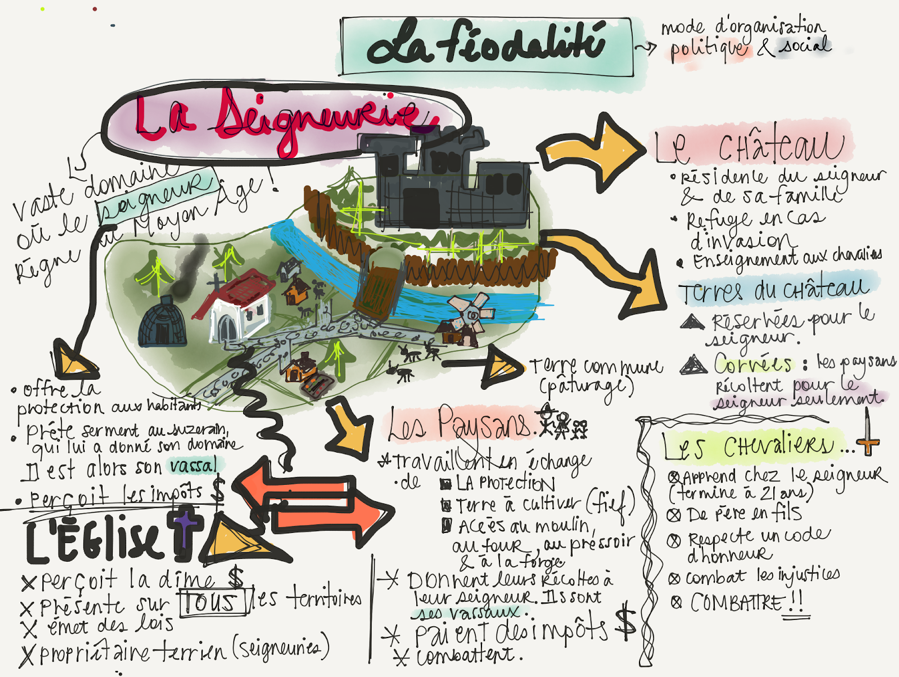
Il est également important de mentionner que selon cette approche, il ne faut en aucun cas juger l’art ou le talent. En fait, c’est davantage le contenu que le contenant qui nous intéresse. Ce qu’il faut en retirer, c’est que la personne qui produit un sketchnote utilise le dessin pour améliorer et analyser sa compréhension, et éventuellement pour l’expliquer.
La mise en place
Selon Marie-Andrée Ouimet, tout le monde peut sketchnoter. Nul besoin de talent en dessin, seulement de créativité et d’un support pour dessiner. Premièrement, je rassurerais les élèves en utilisant la même technique qu’elle a utilisée avec nous lors de la présentation de l’atelier, soit de nous faire dessiner un rond, un carré, une ligne, un triangle et un point. Tout le monde est en mesure de reproduire ces formes, et à partir de celles-ci, il est possible de dessiner n’importe quoi.
Pour la production du sketchnote, voici quelques applications faciles d’utilisation :
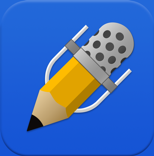
AutoDesk 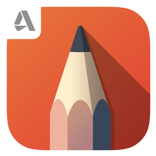
Notability 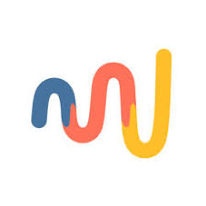
Paper Sketchbook
Peu importe votre choix d’application, prévoyez un moment d’apprivoisement pour les élèves. Vous pouvez utiliser des tutoriels ou bien laisser les élèves explorer par eux-mêmes (je vote pour cette option!).
Vous n’avez pas accès à des outils numériques? Le sketchnote peut être fait également sur du papier, tout simplement, ou dans un calepin dédié à recevoir les futures œuvres. Attention! On ne jette rien. Il peut y avoir des brouillons, mais jamais de « mauvaise » production.
Voici des exemples tirés de la classe d’enseignants ayant fait l’expérience au primaire et au secondaire :
Les voies possibles à explorer
Ce qui est plaisant avec cette approche, c’est qu’il n’y a pas de « bonne » ou de « mauvaise » façon de l’utiliser. En fait, l’important, c’est que le travail réalisé puisse aider les élèves. Cependant, selon les matières, il peut y avoir des leçons qui s’y prêtent mieux.
En français, il peut être intéressant de lire une histoire à voix haute aux élèves et de les faire ensuite dessiner ce qu’ils en ont retenu. Ils peuvent également résumer un texte, un roman, un article ou tout autre genre de texte en prenant soin de marquer les liens entre les idées. Pourquoi ne pas faire le plan d’une présentation orale également? Au lieu du PowerPoint habituel, l’idée d’imager le contenu de la présentation selon les consignes données peut être originale.
En univers social, le vocabulaire précis pose souvent problème aux élèves. De ce fait, la création d’un dictionnaire illustré peut être une bonne idée pour vérifier que notre classe a bien saisi la matière. Aussi, il peut être intéressant de présenter de la matière aux élèves et d’ensuite la reproduire en sketchnote. Dans le même ordre d’idées, on peut leur demander de lire un texte, de regarder une vidéo ou d’interpréter un document puis d’en tirer des concepts-clés qu’ils devront dessiner par la suite.
Bref, sky’s the limit! Laissez votre imagination vous guider et… bon sketchnoting!
Voici mon deuxième sketchnote sur la représentation de ma formation :
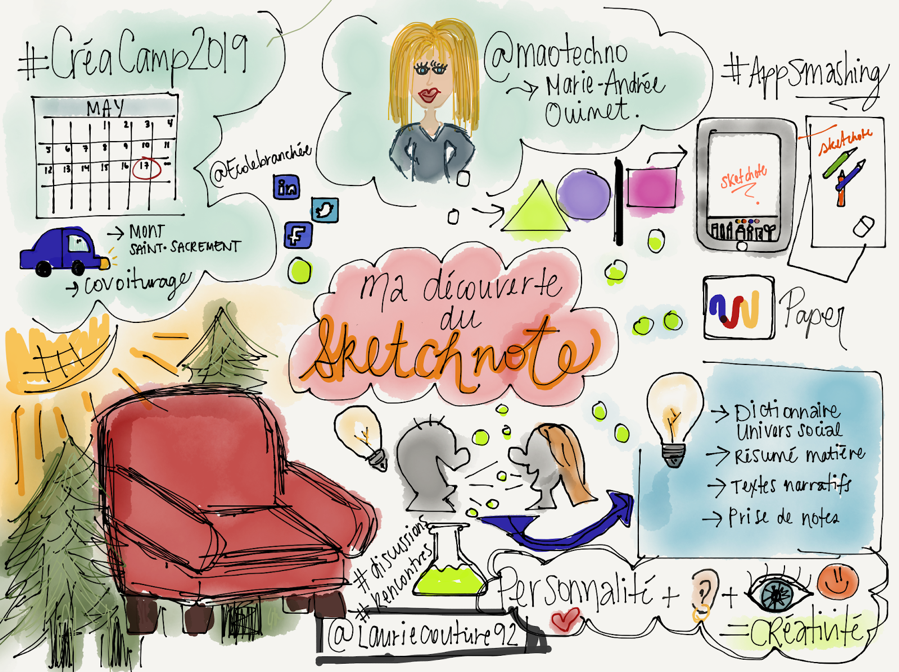

Découvrez le site web de Marie-Andrée Ouimet, La folie du sketchnote.






